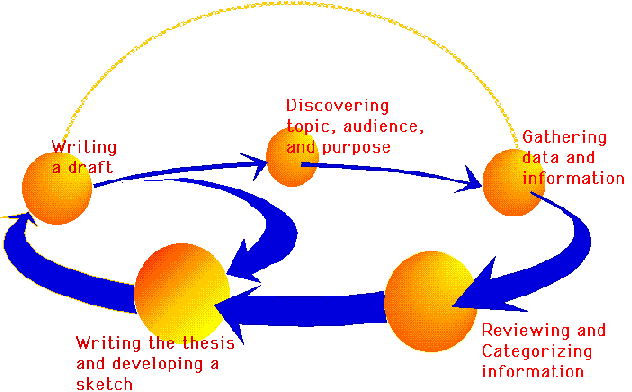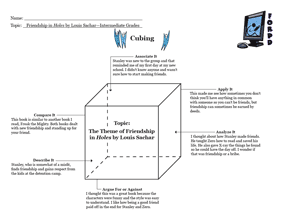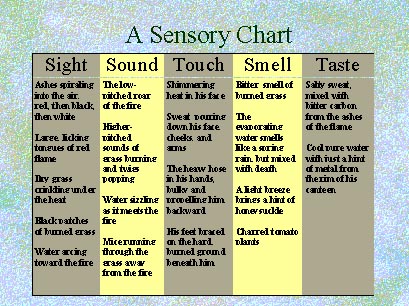 |
 |
 |
 |
 |
 |
 |
 |
 |
 |
 |
 |
 |
 |
 |
 |
 |
 |
 |
 |
 |
 |
 |
 |
 |
 |
 |
 |
 |
 |
 |
 |
 |
 |
 |
 |
|
|
Research Alert:
Invention in Writing |
|
|
 |
|
|
|
|
|
 |
|
|
|
|
|
|
|
|
 |
|
|
|
EDUCATOR TIPSHEET |
|
|
|
General Principles |
|
|
|
- Don't grade invention work; or if you do, grade for participation, minimum number of lines, effort, etc. It is important that invention not be constrained by the need for correctness.
- First model invention strategies yourself, then have the class participate as a whole. Once you are sure the students have a good grasp on the techniques, move on to individual and small group invention.
- Set aside plenty of time for instructing your students in invention techniques and plenty of time for practice. The more students freewrite, the more fluent in writing and critical thinking they will become.
- Give students time to master one technique before you move on to the next.
- Encourage students to write down everything that comes to mind, even if it seems "dumb" or irrelevant. This is the student's opportunity to take intellectual risks and be creative. |
|
|
|
 |
|
|
|
Common Invention Strategies |
|
|
|
- Freewriting: Write non-stop about your topic, usually for a specified period of time such as 3 or 10 minutes. A stream-of-consciousness approach is ideal. This technique can be adapted as needed: it can be timed or untimed, short or long, with guidelines or without, etc. The main thing is that you write quickly and without regard to correctness. A very useful variant is called "looping": freewrite for 3 minutes, then choose one idea from what you've written. Freewrite about that topic for 3 minutes. The looping can be continued as long as it is productive.
- Brainstorming: Similar to freewriting but more structured, brainstorming involves using free association to develop ideas relevant to your topic. Instead of stream-of-consciousness sentences and fragments, write down key words and phrases. When you are done brainstorming, you can reorganize the ideas and discover relationships, subheadings, etc.
- Clustering/webbing/mapping: Similar to brainstorming, but organized in a visual pattern as to show linkages between ideas. See sample below: |
|
|
|
 |
|
|
|
- Cubing: A method of approaching your topic from six points of view. The most often-used prompts are: describe it; compare it; associate it; analyze it; apply it; argue for or against it. See sample below: |
|
|
|
 |
|
|
|
- Heuristics: Any systematic way of questioning or interviewing yourself in order to produce ideas. The most commonly-used version of this are the Journalist's Questions (who, what, where, when, why, and how.) The sample below illustrates some of the possibilities for heuristics in creative writing. |
|
|
|
 |
|
|
|
 |
|
|
|
Back to Research Alert Main Page |
|
|
|
 |
|
|
READ 5326
Home |
|
|
|
|
|
Home |
|
|
|
|
|
|
|
|
Email me! |
|






